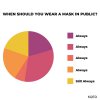[OA] Urological implications of SARS CoV-19
Introduction: The novel coronavirus disease 2019 (COVID-19), pandemic has afflicted > 3.3 million people around the world since December 2019. Though, more than 1000 publications have appeared in scientific journals addressing a plethora of questions, there is a considerable hiatus in understanding of the behavior and natural history of the virus and its impact on urology. Also, a modified approach is the need of hour in taking care of patients as urologists should safeguard their teams, families, and patients.
Material and methods: The authors have used guidelines from USA, Canada, UK, Europe and India for making recommendations to help urologist define their own policies that may have to be fine-tuned on the basis of continued and evolving challenges they would encounter and the local resources at their disposal.
Results: COVID-19 do effect genitourinary system from kidney to testis. The authors provide scientific basis to urologists to help identify patients by remote consultation who are likely to be harmed by coming to the hospital, and not to miss those who need hospitalization for diagnostic or therapeutic interventions. There is uncompromised need of specific precautions during surgery to safe guard the surgeon and his team along with the patient.
Conclusions: Urological operations during COVID-19 pandemic should be limited to emergency cases during the acute phase with an exit strategy planned in a staggered manner, based on the scientific risk stratification. Telemedicine (e-clinics or virtual clinics) would help achieve the goal of risk stratification.
Tyagi V, Sharma AK, Bhandari M. Urological implications of SARS CoV-19. Can J Urol. 2020;27(3):10205-10212. CJU International - Article Abstract:
Introduction: The novel coronavirus disease 2019 (COVID-19), pandemic has afflicted > 3.3 million people around the world since December 2019. Though, more than 1000 publications have appeared in scientific journals addressing a plethora of questions, there is a considerable hiatus in understanding of the behavior and natural history of the virus and its impact on urology. Also, a modified approach is the need of hour in taking care of patients as urologists should safeguard their teams, families, and patients.
Material and methods: The authors have used guidelines from USA, Canada, UK, Europe and India for making recommendations to help urologist define their own policies that may have to be fine-tuned on the basis of continued and evolving challenges they would encounter and the local resources at their disposal.
Results: COVID-19 do effect genitourinary system from kidney to testis. The authors provide scientific basis to urologists to help identify patients by remote consultation who are likely to be harmed by coming to the hospital, and not to miss those who need hospitalization for diagnostic or therapeutic interventions. There is uncompromised need of specific precautions during surgery to safe guard the surgeon and his team along with the patient.
Conclusions: Urological operations during COVID-19 pandemic should be limited to emergency cases during the acute phase with an exit strategy planned in a staggered manner, based on the scientific risk stratification. Telemedicine (e-clinics or virtual clinics) would help achieve the goal of risk stratification.
Tyagi V, Sharma AK, Bhandari M. Urological implications of SARS CoV-19. Can J Urol. 2020;27(3):10205-10212. CJU International - Article Abstract:





